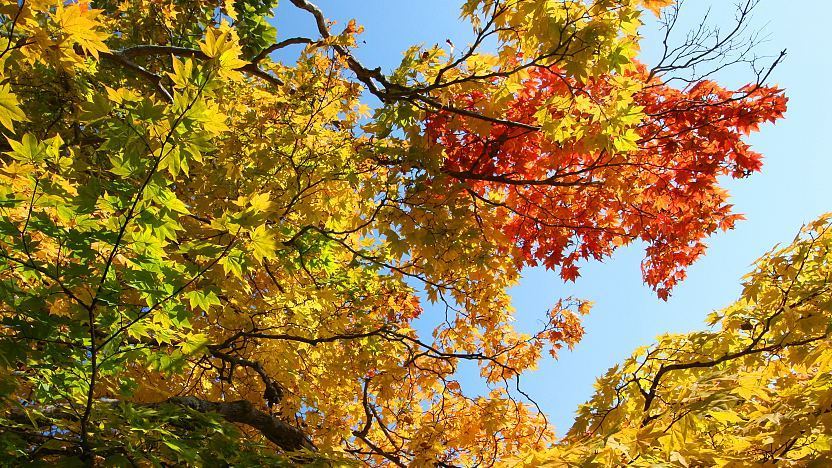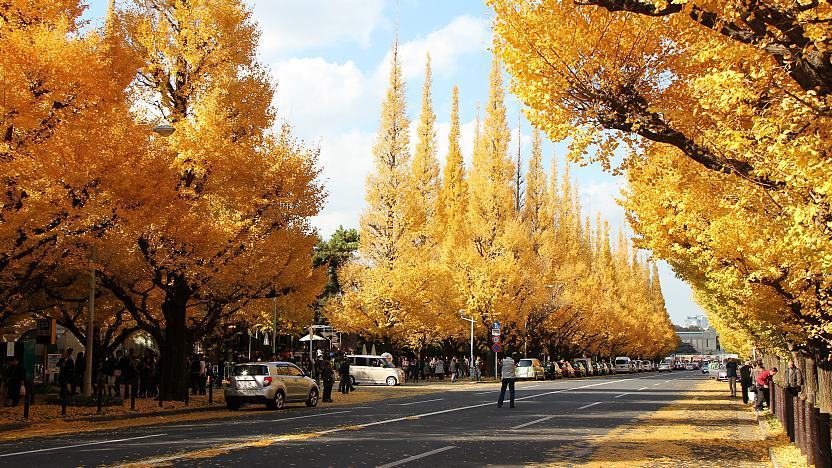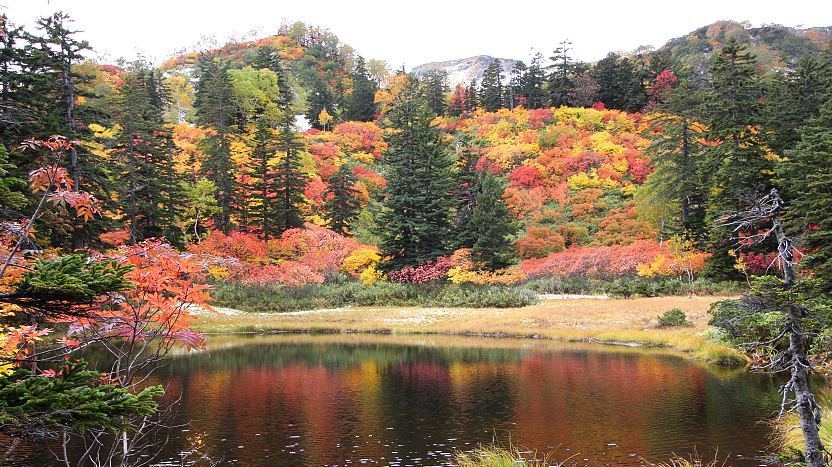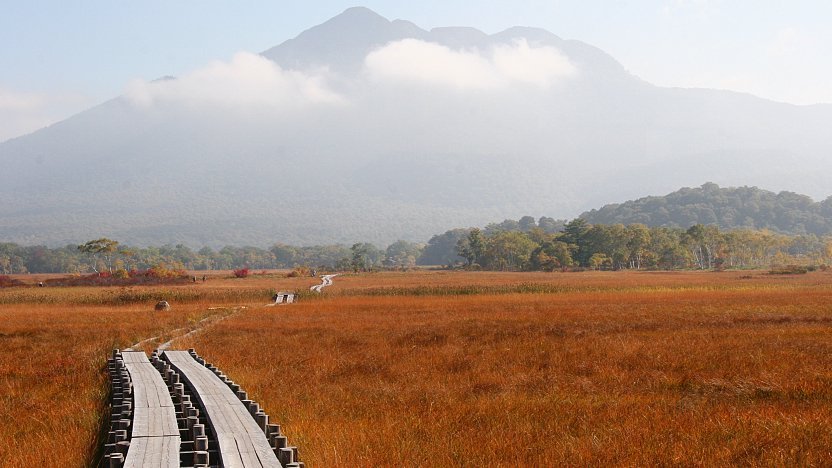What trees turn colors?

The maple tree is the indisputable king of autumn colors. As a matter of fact, the word "autumn colors" (pronounced: koyo) is written with the same kanji characters as the word "maple tree" (pronounced: momiji). Maple trees are native to Japan and can be seen in their wild form in forests. Furthermore, humans have cultivated over a hundred varieties of maple trees over the centuries for decorative use.
It is some of these cultivated maple tree varieties that come with the most brilliant autumn colors, turning gradually from a beautiful green into yellow, orange and finally a shiny red. Maple trees are used widely in Japanese gardens, and the temples and traditional gardens of Kyoto are some of the best places to admire them. But they are also encountered in forests, mountains and city parks.

Perhaps the second most popular tree for autumn colors is the ginkgo (icho). Its leaves do not turn red. Instead they turn into one of the most brilliant yellow colors that nature has to offer. Ginkgo trees are more easily found in temples, shrines, urban parks and along city streets than in nature. The Metropolis of Tokyo has chosen the ginkgo as its symbol tree.
The variety of trees found in the mountains naturally differs somewhat from that found in the cities and gardens, especially in the higher elevations. The king of autumn colors in the higher elevations of mountainous Japan is the nanakamado (Japanese Rowan), a shrub whose leaves behave similarly spectacular as maple leaves. The nanakamado offers particularly nice sights above the tree line where it can monopolizes entire mountain slopes.

Another beautiful tree in the higher elevations is the Japanese larch (karamatsu), the only conifer to change colors (and lose its needle-shaped leaves) in autumn. The larch tree rivals the ginkgo tree with its brilliant yellow colors.
Among the many other trees and shrubs found in Japan, some produce nice autumn colors, while others go directly from green into an unremarkable brown. Among the more attractive other trees are the Japanese zelkova (keyaki), the beech (buna), the horse chestnut (tochinoki), various vines, the birch (shirakaba), the Japanese lacquer tree (urushi) and rhododendron (tsutsuji). The leaves of cherry trees (sakura) also changes into a reddish orange, but not a particularly brilliant one.
A final contributor to autumn colors are grasses. Known as kusamomiji (grass autumn colors), some types of grasses in marshlands and on mountainous plains and slopes can provide attractive yellow colors that sometimes fade into a fascinating red. The marshland of Oze National Park is one of the nicest places to enjoy autumnal grass.

Questions? Ask in our forum.


